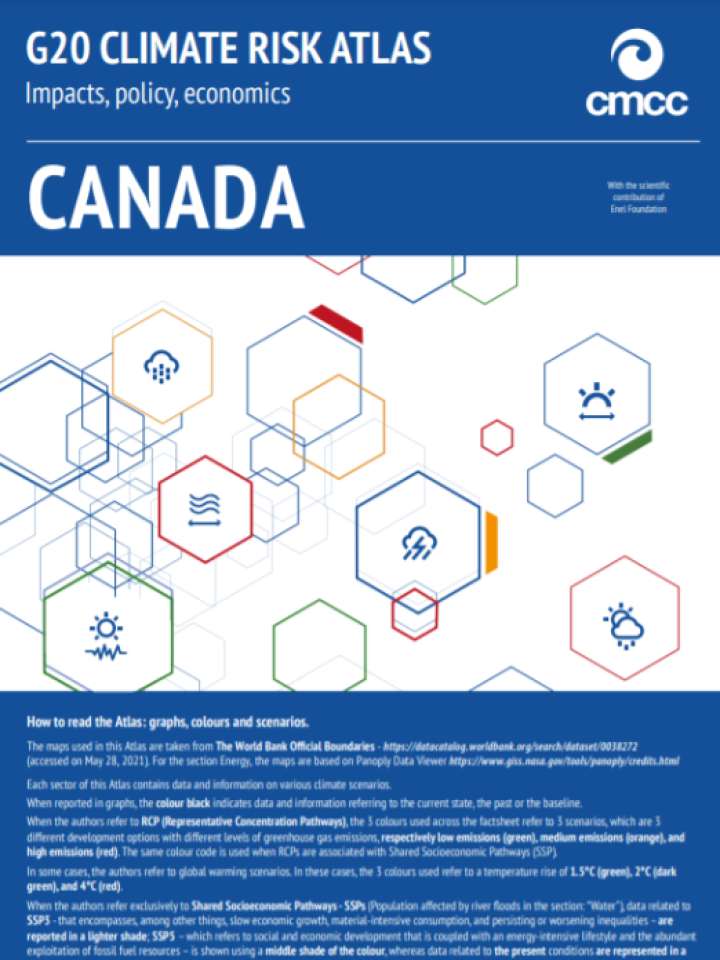G20 Climate Risk Atlas: Canada
This report summarizes the risks posed on Canada's climate, ecosystems, food and water systems, and citizens by climate impacts, as well as the country's policies for mitigation, adaptation, and emissions reductions. Climates and temperatures across Canada vary from region to region due to its great latitudinal distribution. Winters can be harsh in many parts of the country, particularly in the interior provinces, which experience a continental climate. In non-coastal regions, snow can cover the ground for almost six months a year, while in parts of the north snow can persist year-round. Coastal areas have a temperate climate. Much of Northern Canada is covered in ice and permafrost which face degradation amid warming temperatures.
The G20 Climate Risk Atlas represents a science-based tool that can support decision-making processes and the planning of required policies. The simple language, attractive features, and design is intended to ensure that the Atlas lends itself to easy consultation and dissemination, therefore opening the door, not only to decision-makers and stakeholders, but also to the general public, creating a participatory and iterative process which can be used to increase public awareness on climate issues. In the process of a sustainable transition, climate change must be considered the fundamental pillar of the political agenda. Only committed and timely mitigation and adaptation actions can limit the intensification of extreme events, the destruction of ecosystems, infrastructure and populations, and in the process enable people to benefit from a better and more equitable future.
Explore further
